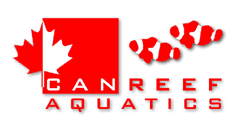
 |
|
#1
|
|||||
|
|||||
|
Hello Everyone,
I had a wierd thing happen this summer, lost many sps frags and colonies. Everything was perfect, even had Kevin @ Red Coral do testing... But still it happened. Things have stabilized and corals are slowly coming back. My question is about the lighting period. I was lighting for 11 hours a day, continously. I have 2X250W MH with 2x5ft T5HO... I just changed it last night to break it down to 9 hours total, a 4 hour period (8am to noon) then a 5 hour period (5pm to 10pm). This is a total of 9 hours. With this new timing, I have removed 2 hours, plus gave the corals a 5 hour break between lighting periods, just in case things are too much. I want others advise, what do you think? Specs: Hamilton Belize 5ft fixture 2X250W MH 2X5ft T5HO MH bulbs are 10K ushio - Love these as they are very white, no yellow T5HO are Hamilton's that came with it - Actinics Please note that fixture and bulbs are about 6 or so months old Thanks for any advice in advance. Rick
__________________
 Setup: 180G DT, 105G Refuge (approx. 300lbs LR, 150lbs Aragonite) Hardware: Super Reef Octopus SSS-3000, Tunze ATO, Mag 18 return, 2x MP40W, 2X Koralia 4's Wavemaker Lighting: 5ft Hamilton Belize Sun (2x250W MH, 2X80W T5HO) Type of Aquarium: mixed reef (SPS & LPS) with fish Dosing: Mg, Ca, Alk |
|
#2
|
|||||
|
|||||
|
Far from being an expert on this but my thought is that the sun does not rise and set twice in a day. Ergo, such a schedule might screw-up their 'internal clocks'.
Anyone have anything more concrete ?
__________________
-Mark 29 Gal Bowfront w/24" LED Lights. DIY HOB Sump (5.4 Gal) MP40. Orange Spotted Watchman Goby, 2 Clownfish and a few hermits. |
|
#3
|
|||||
|
|||||
|
What I found works amazingly well for my system is to have a slow progression of light intesity and spectrum. I have T5 actinics and 400W Radium 20K. The T5s go on first to ease corals and fish into the day. Then only one of the MHs turns on. After 2 hrs, the second MH turns on, but the T5s turn off. Corals should only be subjected to about 4-5 hrs of intense light (whatever spectrum, 10K-20K). Otherwise they photosaturate, and can recess. After the last MH bulbs turns off, the actincs turn on to again ease the fish/corals into complete darkness.
HTH |
|
#4
|
|||||
|
|||||
|
Quote:
__________________
 Setup: 180G DT, 105G Refuge (approx. 300lbs LR, 150lbs Aragonite) Hardware: Super Reef Octopus SSS-3000, Tunze ATO, Mag 18 return, 2x MP40W, 2X Koralia 4's Wavemaker Lighting: 5ft Hamilton Belize Sun (2x250W MH, 2X80W T5HO) Type of Aquarium: mixed reef (SPS & LPS) with fish Dosing: Mg, Ca, Alk |
|
#5
|
||||
|
||||
|
Quote:
i do the same if you think about it your trying to mimic where it comes from, i start with t5's in the morning then go halides for about 4-5 hours then i use actinics in the evening.its all done by a timer so i dont mess it up. in my new set up i plan to phase in moon phases and seasonal time differences   cheers cheers
__________________
........ |
|
#6
|
|||||
|
|||||
|
Thanks, I appreciate your comments.
This is what I just changed it to: T5's turn on at noon, MH's turn on at 5PM, then turn off at 10PM, T5's turn off at pm I think this is better, maybe my slow recovery is due to too much blasting of light. Your thoughts on my new configuration?
__________________
 Setup: 180G DT, 105G Refuge (approx. 300lbs LR, 150lbs Aragonite) Hardware: Super Reef Octopus SSS-3000, Tunze ATO, Mag 18 return, 2x MP40W, 2X Koralia 4's Wavemaker Lighting: 5ft Hamilton Belize Sun (2x250W MH, 2X80W T5HO) Type of Aquarium: mixed reef (SPS & LPS) with fish Dosing: Mg, Ca, Alk |
|
#7
|
|||||
|
|||||
|
I would keep the T5s off until both MHs turn off,then turn them on. Personally, i think that it is unnecessary to keep them on during the 'day'.
|
|
#8
|
||||
|
||||
|
i think its much better. alot of coral react differently and change when its dark so its stressfull to do so more than needed .
also distance from the coral is a big factor i had to tinker with my height to get good growth, now any thing i add out grows my tank in a few months. glad to hear your tank is making a recovery, sometimes its slow at first and then your growth takes off again   cheers cheers
__________________
........ |
|
#9
|
||||
|
||||
|
Quote:
i agree with that also my halides are on by them selves when they are on 
__________________
........ |
|
#10
|
|||||
|
|||||
|
I revised things a bit more, will see how that works... As I only have 2 T5's and they are actinics, I will leave them on with the Halides, as it does assist to make my lighting appear very white, not yellow as 10k's can do.
This is what I just changed it to: T5's turn on at 9am, MH's turn on at 4PM, then turn off at 9PM, T5's turn off at 10pm I will give this a shot and see how things reacte, hopefully damaged coral from over the summer will like it. What do you all think, will this config work?
__________________
 Setup: 180G DT, 105G Refuge (approx. 300lbs LR, 150lbs Aragonite) Hardware: Super Reef Octopus SSS-3000, Tunze ATO, Mag 18 return, 2x MP40W, 2X Koralia 4's Wavemaker Lighting: 5ft Hamilton Belize Sun (2x250W MH, 2X80W T5HO) Type of Aquarium: mixed reef (SPS & LPS) with fish Dosing: Mg, Ca, Alk |